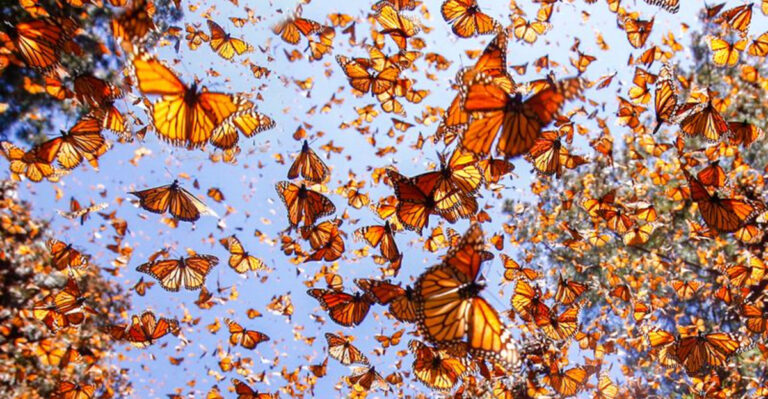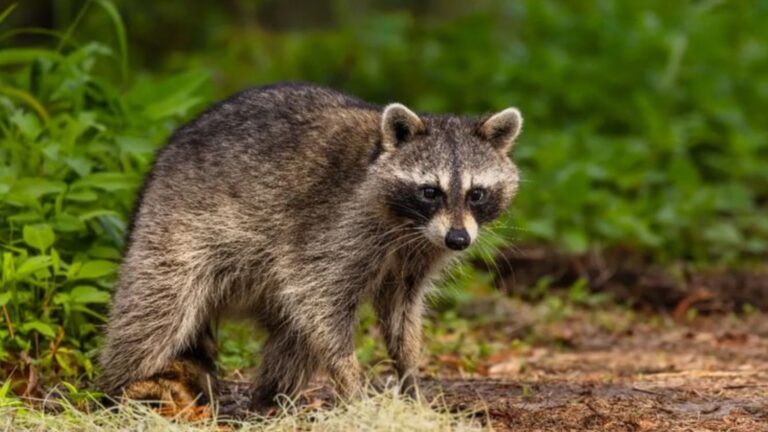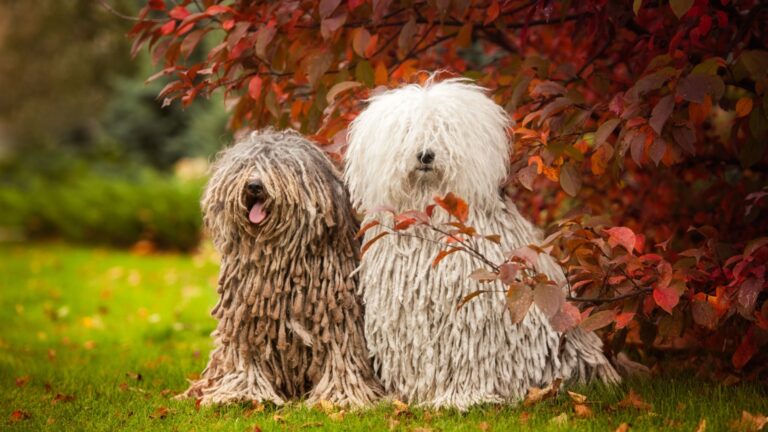14 Clever Tricks Mule Deer Use To Endure Rocky Mountain Winters
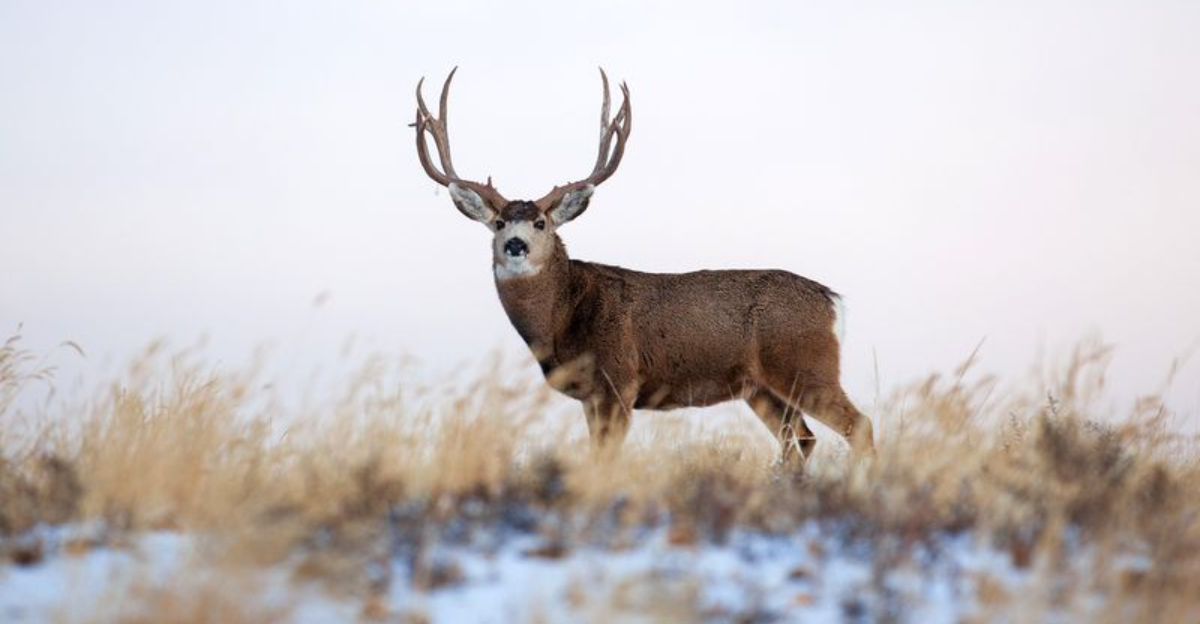
When winter blankets the Rocky Mountains in snow, mule deer face brutal conditions that would challenge even the toughest adventurers. These remarkable animals have evolved amazing strategies to survive temperatures that plunge well below freezing.
From specialized physical adaptations to clever behavioral tricks, these deer showcase nature’s incredible design for winter survival in one of North America’s harshest environments.
1. Growing A Super-Insulated Winter Coat

Imagine wearing a jacket filled with thousands of hollow hairs that trap warm air close to your skin. That’s exactly what mule deer do each fall!
Their winter coat contains special hollow guard hairs that create an insulating layer of warm air. This natural down jacket is so effective that snow can pile up on a deer’s back without melting – proof of how little body heat escapes.
2. Shrinking Their Metabolism
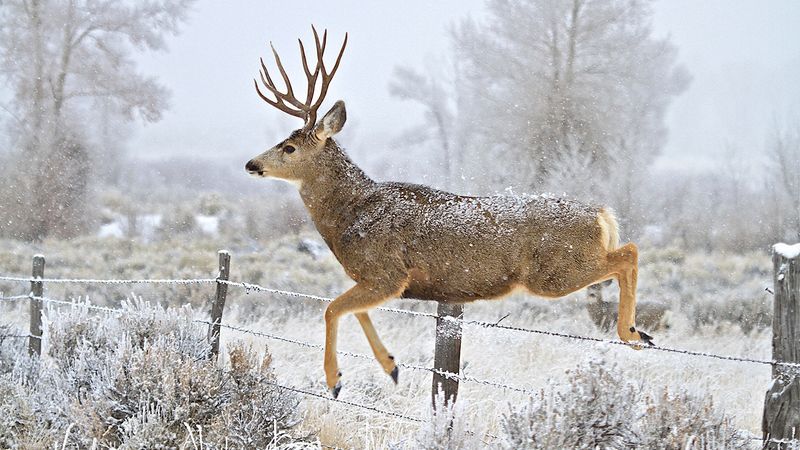
Winter brings a fascinating biological slowdown for these woodland survivors. Mule deer can reduce their metabolism by up to 50% during harsh winter months.
This energy-saving mode means they need less food when it’s scarce. Their heart rate drops, breathing slows, and they become masters of conservation – like living on half the calories while still maintaining critical body functions.
3. Fat-Loading In Fall

Fall turns mule deer into natural bodybuilders as they pack on pounds for winter survival. They’ll gorge on late-season berries, nuts, and nutritious plants.
This strategic eating builds fat layers that can make up 20% of their body weight! These energy reserves become crucial during deep winter when a deer might burn 30% more calories just staying warm than it does during summer.
4. Mastering The Art Of Pawing
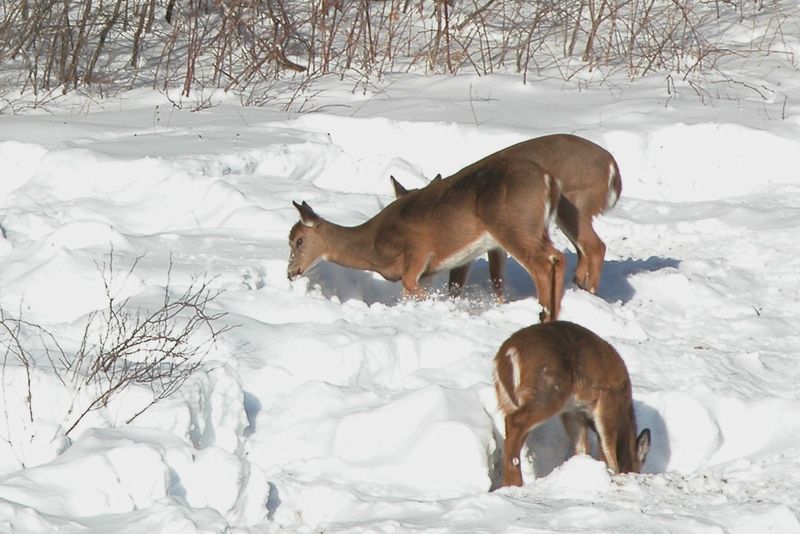
Snow can’t hide food from hungry mule deer! They’ve perfected a technique called “pawing” or “cratering” to access buried vegetation.
Using their front hooves like snow shovels, they dig through up to 18 inches of snow to reach nutritious plants below. This skill becomes a literal lifesaver during heavy snowfall when other food sources disappear beneath the white blanket.
5. Teaming Up In Winter Herds

Summer’s solitary lifestyle gives way to winter togetherness as mule deer form larger groups when temperatures drop. These winter herds might include 15-30 animals that would normally avoid each other.
More eyes mean better predator detection, and many bodies create shared warmth. They’ll even take turns breaking trail through deep snow, rotating leaders to conserve energy across the group.
6. Seeking South-Facing Slopes
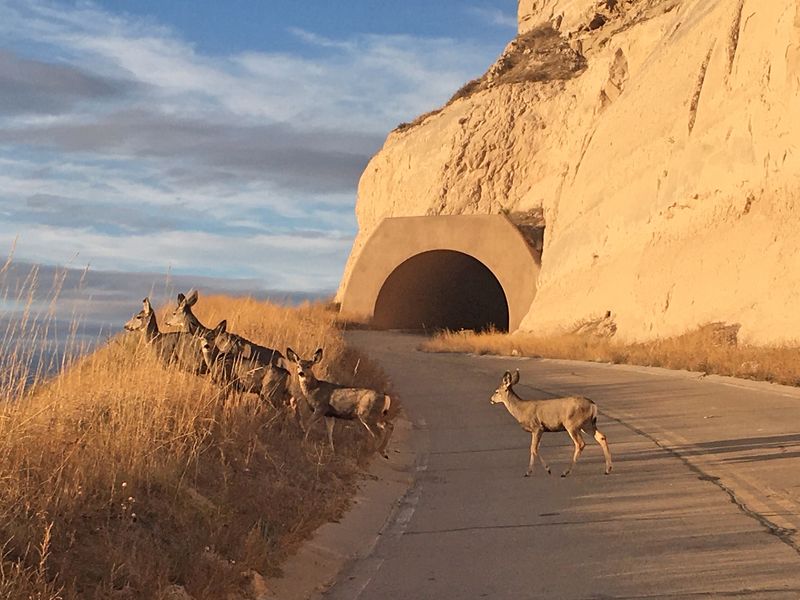
Talk about real estate savvy! Mule deer become solar experts in winter, preferring south-facing slopes for their natural warming properties.
These sun-catching hillsides receive more direct sunlight, melting snow faster and exposing vegetation. The clever deer also benefit from radiant heat absorbed by rocks during daylight hours, creating natural warming stations in an otherwise frozen landscape.
7. Developing Cold-Weather Hooves
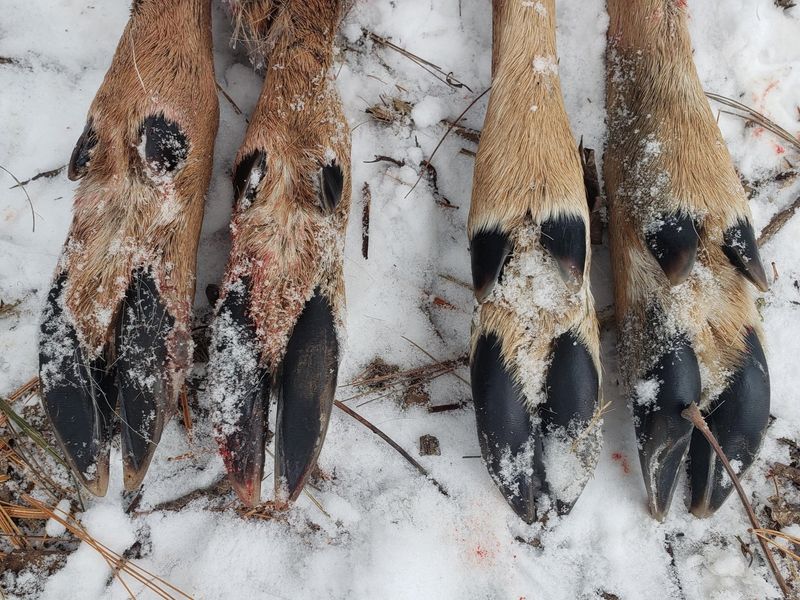
Winter brings a remarkable transformation to mule deer feet. Their hooves actually harden and grow sharper edges during cold months!
These modified hooves act like natural crampons, providing crucial traction on icy slopes where a slip could be fatal. The hardened edges also become more effective digging tools for pawing through crusty snow to reach hidden food.
8. Finding Natural Windbreaks
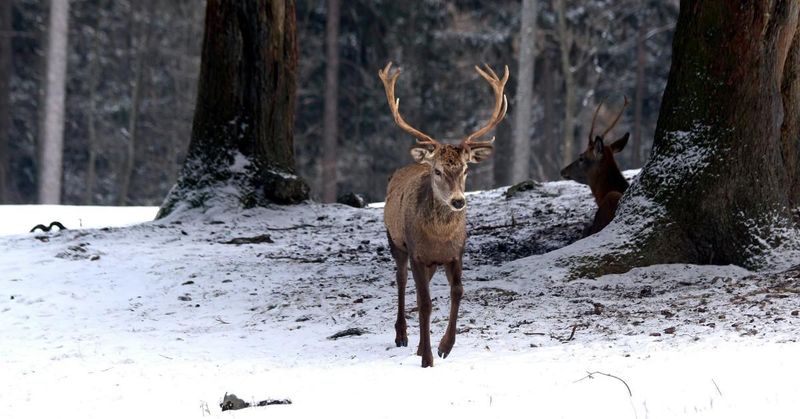
Wind chill can drop temperatures to deadly levels, so mule deer become experts at finding natural shelters. They’ll tuck themselves behind rock formations, dense evergreen stands, or in shallow depressions.
These microhabitats can be 10-15 degrees warmer than exposed areas. During severe storms, deer might remain in these protective pockets for days, minimizing movement to conserve precious energy reserves.
9. Adjusting Daily Schedules
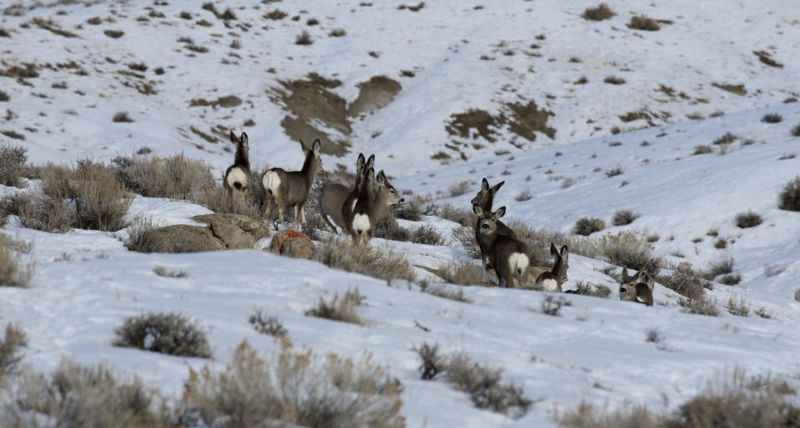
Winter transforms mule deer into solar-powered creatures with dramatically shifted schedules. They become most active during midday warmth rather than dawn and dusk. This timing flip lets them feed when temperatures peak and plants thaw slightly.
They’ll soak up precious sunshine to warm their bodies before returning to sheltered bedding areas during frigid nights when temperatures plummet dangerously low.
10. Migrating To Lower Elevations
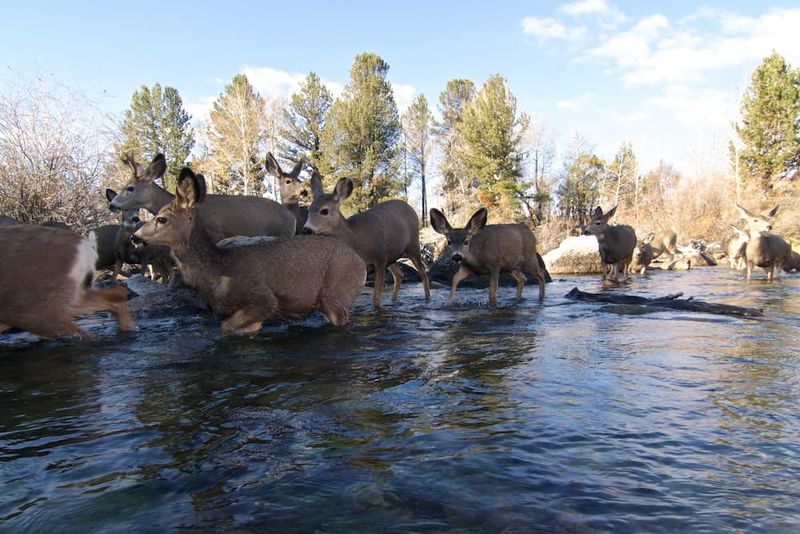
When high-country snow deepens, many mule deer embark on remarkable journeys. They’ll travel up to 150 miles from summer ranges to winter havens at lower elevations. These migrations follow ancient routes passed down through generations.
Lower elevations offer milder temperatures, less snow accumulation, and more accessible food sources – making the arduous journey worthwhile despite the energy cost and predator risks.
11. Utilizing Body-Warming Postures

Watch a resting mule deer in winter and you’ll notice they’re masters of heat conservation through clever positioning. They’ll tuck their legs underneath their bodies and lower their heads close to their chest.
This posture minimizes exposed surface area and creates a heat-trapping bubble. They even position themselves to expose their dark backs to sunlight, absorbing maximum warmth while shielding vulnerable underbellies from wind.
12. Developing a Winter Digestive System

Winter brings internal changes as remarkable as external ones. Mule deer’s digestive systems actually transform to process lower-quality food more efficiently. Their rumens (stomach chambers) enlarge to hold more food, and special microbes flourish that can break down woody browse like twigs and bark.
This digestive flexibility allows them to extract maximum nutrition from foods they’d normally avoid during summer abundance.
13. Conserving Energy Through Stillness
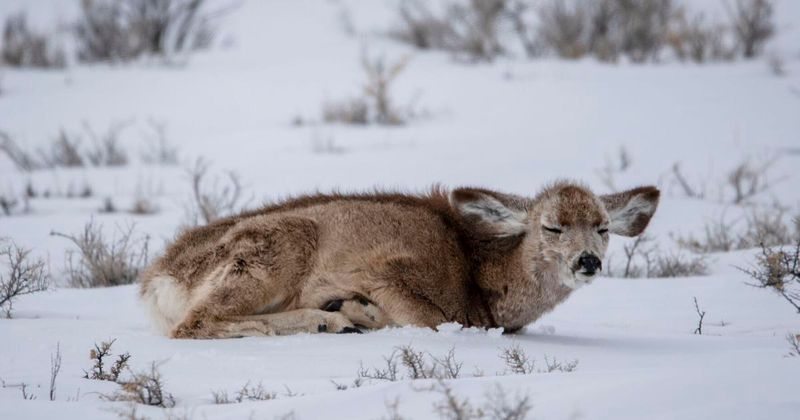
Winter brings a remarkable behavioral shift as typically alert mule deer become masters of motionlessness. They’ll remain bedded for 12+ hours daily, appearing almost statue-like.
This extreme stillness conserves precious calories – every unnecessary movement burns energy needed for survival. They’ll even delay rising when disturbed if possible, calculating whether the threat justifies the energy cost of fleeing.
14. Browsing On Emergency Foods

When winter turns desperate, mule deer expand their menu to include survival foods they’d normally reject. Bitter sage, pine needles, and even lichen become acceptable meals. Though less nutritious than their preferred diet, these emergency foods provide just enough calories to sustain life.
Their specialized liver can even detoxify certain plant compounds that would sicken other animals, turning marginally edible vegetation into lifesaving nourishment.


